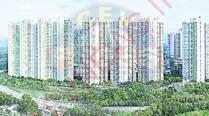By: Rohan Sharma
Large townships, in most cases integrated townships, are self-contained developments which are centred on residential projects with the associated physical, trunk infrastructure and social infrastructure comprising of recreational greens, schools, neighbourhood shopping, medical facilities and security services provided by private firms and the local police.
Large township projects have multiple residential projects under development (viz. high-rise apartments, low-rise independent floors and villas) which could be spread across the entire township in the form of independent, separate projects. In other words, a large township is primarily a conurbation of multiple projects in a self-sustained, independent city-like environment with linkages to the municipal city.
Individual residential projects within a township are akin to standalone residential developments in terms of approvals required and upon completion, their maintenance and security solutions. However, in the case of a township, the developer is in charge of the overall maintenance and security of the common areas of his township until the entire township project has been successfully delivered to all homeowners. Further, till the final occupation certificate for the entire township is received, the maintenance of the township facilities is the responsibility of the developer.
In case of individual projects within the township the developer may, upon completion of such a project and receipt of its occupation certificate, hand over the maintenance to the Resident Welfare Association (RWA) of that particular project. He still remains responsible for the common area maintenance of the overall township. In such development models, homeowners usually pay maintenance for the common area maintenance within their project, and also a proportionate share towards the township maintenance.
As a result, they end up paying slightly more than they would have in the case of a standalone residential development. However, such additional pay-out is justified by the amenities being created for the entire township. The maintenance costs in most residential projects are in the range of Rs 2.00-4.00 per sq ft per month. An additional charge towards the main township maintenance and security adds another 30-50 per cent over and above the maintenance charges for individual projects.
Upon completion of the entire township and receipt of the occupation certificate for the whole development, the developer may offer to undertake the maintenance common services for the whole township himself, or alternatively allow the creation of a township federation (which comprises of heads of the individual projects’ RWAs) to take over the township maintenance.
The services covered under the township include maintenance of common areas such as roads, common facilities’ buildings, common security, street lights, garbage and sewage disposal services, costs of consumables, employees’ costs, spares, equipment, building insurance and a general sinking fund corpus.
All projects, though with individual RWAs, utilise the township services and common facilities such as roads and streetlights; hence, they cannot consider themselves isolated islands. Payment of maintenance charges to the township federation or developer is a mandatory provision which is enforced through separate maintenance contracts pertaining to payments towards such services. Individual residential projects cannot opt to be out of a township federation if they are part of a township development.
The author is associate director – Research & Real Estate Intelligence Service, JLL India.
Source link

